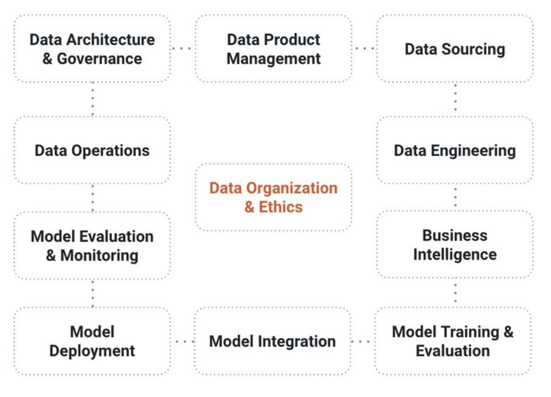AI-ifying Business Processes
AI applications range from simple rule-based systems to self-learning models, to complex multi-agent systems that...
|
CONSTRUCTION & REAL ESTATE
|
 |
|
Discover how crafting a robust AI data strategy identifies high-value opportunities. Learn how Ryan Companies used AI to enhance efficiency and innovation.
|
| Read the Case Study ⇢ |
|
LEGAL SERVICES
|
 |
|
Discover how a global law firm uses intelligent automation to enhance client services. Learn how AI improves efficiency, document processing, and client satisfaction.
|
| Read the Case Study ⇢ |
|
HEALTHCARE
|
 |
|
A startup in digital health trained a risk model to open up a robust, precise, and scalable processing pipeline so providers could move faster, and patients could move with confidence after spinal surgery.
|
| Read the Case Study ⇢ |
|
LEGAL SERVICES
|
 |
|
Learn how Synaptiq helped a law firm cut down on administrative hours during a document migration project.
|
| Read the Case Study ⇢ |
|
GOVERNMENT/LEGAL SERVICES
|
 |
|
Learn how Synaptiq helped a government law firm build an AI product to streamline client experiences.
|
| Read the Case Study ⇢ |
 |
|
Mushrooms, Goats, and Machine Learning: What do they all have in common? You may never know unless you get started exploring the fundamentals of Machine Learning with Dr. Tim Oates, Synaptiq's Chief Data Scientist. You can read and visualize his new book in Python, tinker with inputs, and practice machine learning techniques for free. |
| Start Chapter 1 Now ⇢ |
By: Synaptiq 1 Nov 15, 2021 11:13:16 AM

Artificial intelligence (AI) has undeniable advantages. Adopters enjoy increased revenue, reduced costs, and additional benefits, according to the global research and consulting firm McKinsey & Company’s 2020 Report on AI in Business.
However, not everyone is ready for AI, even in the most tech-savvy organizations like financial services, as well as industries – such as construction and logistics and transportation – where attention on AI is rapidly picking up pace and software companies are launching more and more new products every year.
Above all else, it’s important to remember as you embark on solving your company’s challenge with artificial intelligence: AI is not like typical software development. It’s a science experiment. And, as a science experiment, you need to keep your mind open and creative for innovation to happen. You also need to be careful about defining the scope and timeline so that, within a reasonable investment, and reasonable timeframe, you have a result that will build momentum for investment.
This blog will discuss how your organization can convince internal skeptics and secure funding to build your AI solution.
Synaptiq highly recommends starting with a proof-of-concept (POC) approach to AI development. We find that this approach works especially well for our clients in the construction industry whose razor-thin margins prevent them from any kind of expenditure that has a high potential risk. With a POC, you can test the waters – it’s a low cost, limited commitment, to look under the hood to determine if bigger projects are even feasible down the road with the data you currently have or the data you could have if you build out a proper data strategy and governance.
To that point, a POC is especially important when the “state of data” is relatively unknown. This alternative to the “all-in” approach does not require a huge funding effort or significant risk-taking. Instead, it proposes that an organization undertake a small, manageable (financially and labor-wise) AI project to test the waters.
The POC model of AI solution-building has three distinct advantages:
If your organization is struggling to secure funding, encountering internal resistance, or otherwise having trouble “getting over the hump”, a POC approach to AI solution building may be right for your firm.
For an AI solution to be successful you need great data. But, to be clear, your firm does not have to be on the “mature” end of data preparedness to be able to start thinking about AI. What you do need is to have an honest understanding of where you are at, and a plan for where you will go from here.
Let us examine this diagram below. A world-class organization will have all of these components running full steam:

Now, let’s think about your business: what objectives does your company have? What ideas do you have about things you can do and problems you could solve with your data to meet these objectives?
As a business leader, you must establish that you have the data (or can easily collect the data) that could possibly solve an impactful problem in your business today. Ideally, this problem ladders up to a business objective or goal for this current year, so your business case is fresh and most relevant.
Your next step is to prioritize your ideas based on business objectives, audience, and the accessibility of the required data. Once you’ve chosen a target problem, you should ensure that you have enough data to facilitate an AI solution. If you have enough data, then you are in good shape to choose a vendor and begin.
Once you start to see what is possible with your data, your team is likely going to get very excited about a project. We cannot emphasize enough how important it is to not only get your team excited, but it’s critically important that you loop in your peers, your manager, and other executive sponsors. This communication is paramount to future investment in the project, and, ultimately, its success.
POC projects can easily get started with the client team not having a lot of experience with AI. In fact, if you’ve already worked on a project – and failed – you are leagues ahead of many others in your industry. We often run into situations with new clients where the internal team has bitten off more than they can chew and it turned out to be a huge failure optically – it was at the outset, a great idea, but had poor execution, and the internal team just need help getting back on track.
Stay motivated as you remind yourself, “AI is a science experiment.” There will be testing, and there will be roadblocks and failures. Remember, it took Nasa 50+ failed attempts to get to Mars. Furthermore, if your team has tried something with AI and failed before, this is a good thing. Because what this “failure” means is that you have already learned very important lessons. And one of the biggest lessons these clients tend to learn is also one of the most important lessons in the entire field of artificial intelligence: knowing your data, how to collect it, and how to label it, is more important than knowing how to build AI models themselves.
Since AI is still relatively new, it can be extremely difficult to obtain a budget for an unknown project in uncharted territory. This is where having a thorough understanding of your data, and what you can do with your data, strong in-house engineers, and experienced AI vendors, can work with you to help you build a solid business case to accelerate your funding and progress.
The biggest challenge our clients face is convincing their company that this is a strategic, long-term investment. Depending on the company culture, or leadership’s past history with AI, there could be immediate “naysayers”. Our recommendation here is to stay focused, and remember: data is your friend and a strategic asset, and just because an AI project was executed poorly in the past, it does not mean it will happen again. This is especially true if you prove to your detractors that the current situation is different, and how you do this is that you 1) Prove your robust understanding of the business’s data; 2) Demonstrate your well-trained internal technical team; 3) Recommend a vendor with a proven track record for ROI with similar organizations with similar challenges your firm faces.
Building a business case for your boss can be overwhelming, especially if this type of project falls outside the regular budget cycle. Some firms have a process for this, but if your firm does not, our recommendation is to start with the facts:
Bottom line, you’ll want facts to back up the emotional appeal. Help your budget decision-makers to understand the risks of doing absolutely nothing here, especially in your competitive environment. Be sure to reference recent examples of where “doing nothing” was a death knell for a company or industry. Your mantra must be: “Failure is ok, we will learn from it and pivot, but if we do nothing, our competitors will eat our lunch.”
A typical POC project with Synaptiq begins at $50k, and a Strategy + AI POC starts at $75k. Here are typical steps our clients have taken with their internal leadership to secure budget approval:
Most importantly – if the answer is “no” at first, don’t give up, find out why it’s a “no”, and plan accordingly. If you missed inclusion in this year’s budget, secure a commitment it will be in next year’s budget. If your budget controller is still unconvinced of the value of this project, provide more examples and information of success stories and show how directly applicable these results are to your own organization.

Synaptiq focuses on the humankind of AI; building a better world as we lean into an age of human and machine interaction. We believe solving serious challenges, making real impact and saving lives is worth every waking moment. So we collaborate and make thoughtful considerations across disciplines examining past, present and future models of merit. Whether history, science, math, nature, human behavior; they all inform the data and ideas that help us find answers to world-class riddles.
We keep our AI on people because AI is how we do it, humanity is why we do it.
AI applications range from simple rule-based systems to self-learning models, to complex multi-agent systems that...
April 29, 2025
A few weeks ago I met a fellow seasoned product manager for lunch. We conversed at length about our origin stories,...
April 29, 2025
By far the biggest lesson I’ve learned since getting involved in AI is that quality data is the limited resource...
April 29, 2025